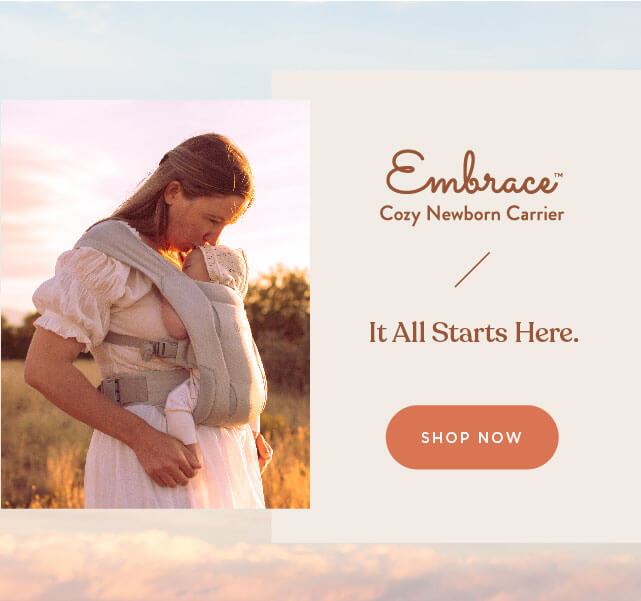Baby wearing in some form of sling or another has been entrenched in the parenting practices of some cultures for centuries. In the western world, we have been a little slower to get on the baby wearing bandwagon, but baby slings are now commonly used by many parents. Baby wearing is a wonderfully practical and natural way to carry your baby. It encourages bonding, promotes intelligence, and leaves your hands free to complete other tasks. However, the sad truth is that babies have died while being carried in baby slings due to the suffocation risks some slings and positions can pose. Practising safe baby wearing will allow you to enjoy all the benefits of keeping your baby close while also keeping them safe.

Selecting for Safety
Manufacturers have produced a plethora of different types of baby slings and anyone who has used one (or more) is likely to have an opinion on the best (and possibly worst) slings on the market. However, it is important not to assume that because a sling is available for sale or because someone has told you they loved this type, that it is safe. Like every other piece of equipment you buy your baby, it is important to know yourself what the requirements are for safety and to check slings before purchase to ensure they are safe.
Safety Checklist
There are three golden rules when it comes to baby slings. First, the sling needs to keep your baby in an upright position. Next, the sling should not in any way hamper your ability to see your baby’s face. Third, the design of the sling and your baby’s position in it, should prevent your baby’s face from being covered or restricted. Some years ago a UK agency called The Consortium of UK Sling Manufacturers and Retailers developed a checklist to promote sling safety. We know it as the TICKS Rule for Safe Baby Wearing:
- Tight
- In view at all times
- Close enough to kiss
- Keep chin off the chest
- Supported back
Tight
Many of the deaths associated with baby slings can be attributed to slack or loose-fitting slings which allow your baby to slump down in the sling. Instead, slings and carriers should keep your baby as tight to your body as they would be if you hugged them close. Apart from reducing the risk of your baby’s breathing being impaired, keeping your baby tight to your body will also prevent unnecessary strain on your back and be more comfortable for your baby too.
In View at All Times
So that you can be sure your baby is safe and well it is extremely important that you are able to see your baby’s face at all times by simply glancing down. While you are going about your day, if you cannot see your baby’s face you are unlikely to know if they are in difficulty. There should not be any fabric which closes around your baby’s head, nor should you need to unbutton, unzip or untie anything to see your baby’s face. If your baby is in a cradle position, position them so they are facing upwards not towards your body.
Close Enough to Kiss
If your chosen sling allows your baby to hang too low down on your body, there is potential for your baby’s face, and therefore their breathing, to be obstructed against your body. The kiss test is the best way to ensure you placed your baby correctly. While your baby is in the sling, if you tip your head forward you should be able to kiss your baby on the head or forehead. If not, your baby is placed too low down. Instead, your baby’s head should be as close to your chin as comfort will allow.
Keep Chin off the Chest
While your baby was tightly curled in your uterus during the final months of pregnancy, this is not a safe position in a sling. Earth-side your baby does not have the benefit of an umbilical cord for oxygen. Slings that result in tight curling of the body can force the baby’s chin onto the chest and restrict their breathing. Horrifyingly this restriction of oxygen can result in a baby slowly suffocating. At all times there should be at least a finger width of space under your baby’s chin.
Supported Back
If you have followed the first four rules in this list then this one has probably taken care of itself. Just the same, it is important to mention that in upright slings you need to support your baby’s back well. Again what is important here is that your baby should not slump. In particular, you must carefully place your babies in cradle carriers or ring slings. Their bottom should be in the deepest part of the sling and care must be taken to ensure that your baby is neither allowed to fold in half with their chin on their chest, or have their head entrapped by excess fabric. For safe baby wearing, pouch slings are largely accepted to present the most danger in this regard and are perhaps best avoided.
Download TICKS rules for safe baby wearing PDF.
Revised on 22nd March 2022




Recent Comments